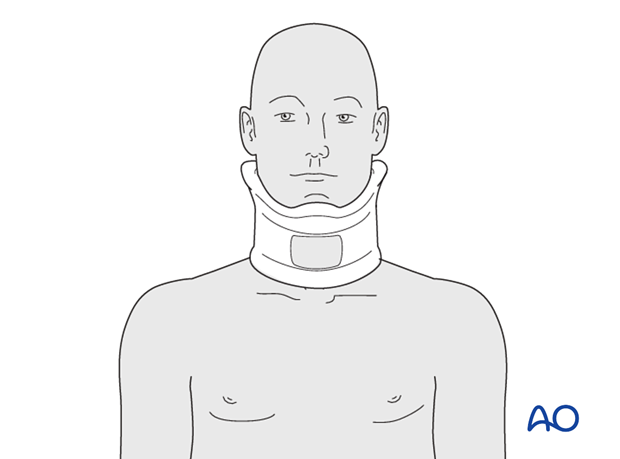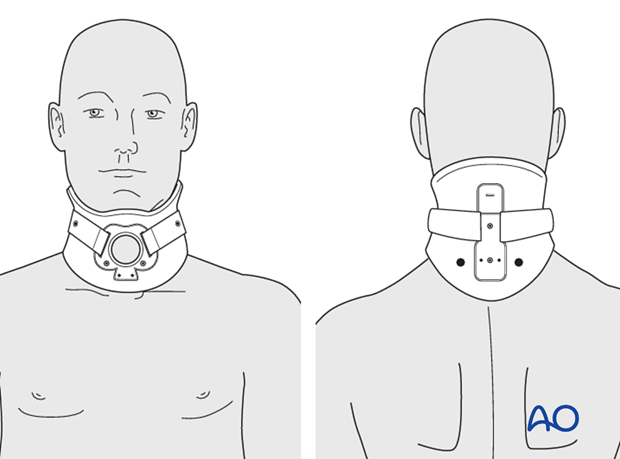Nonoperative (collars)
1. Introduction
The purpose of a collar is to prevent ranges of motion outside of limits deemed unfavorable for fracture healing.
A fracture that is deemed to be stable may be treated with a collar immobilization or without immobilization.
Early mobilization is instituted once a patient is upright. AP lateral plain x-rays are then obtained to make sure there is no significant fracture displacement requiring surgery.
2. Options
Soft collar
A soft collar will not provide any mechanical support and is only used for pain management.
Do not use for more than 2–3 weeks.

Hard collar PDC
This collar provides limited support for the upper cervical spine. Furthermore it can be used for additional support after surgery.
When used in treatment of stable fractures, x-ray control should be performed after 1 week.
The total treatment duration is 6 weeks.

Sterno occipito mandibular immobilizer (SOMI)
The "Junior" version provides moderate mechanical support for the subaxial cervical spine. It can be used for the nonoperative treatment of stable cervical fractures.

The "Orthesis" version provides moderate mechanical support for C1–T3. It may also be used for the nonoperative treatment of fractures.
When used in treatment of stable fractures, x-ray control should be performed after 1 week.
The total treatment duration is 6–12 weeks depending on the type of fracture.

Minerva cast
The Minerva cast can be used in children instead of a halo vest. It provides moderate mechanical support for C1–T3.
Treatment duration is 4–12 weeks depending on age and type of injury.














